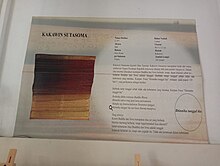
Majapahit, also known as Wilwatikta, was a Javanese Hindu-Buddhist thalassocratic empire in Southeast Asia that was based on the island of Java. It existed from 1293 to circa 1527 and reached its peak during the era of Hayam Wuruk, whose reign from 1350 to 1389 was marked by conquests that extended throughout Southeast Asia. His achievement is also credited to his prime minister, Gajah Mada. According to the Nagarakretagama written in 1365, Majapahit was an empire of 98 tributaries, stretching from Sumatra to New Guinea; consisting of present-day Indonesia, Singapore, Malaysia, Brunei, southern Thailand, Timor Leste, southwestern Philippines although the scope of Majapahit sphere of influence is still the subject of debate among historians. The nature of Majapahit's relations and influence upon its overseas vassals and also its status as an empire still provokes discussion.
Old Javanese or Kawi is the oldest attested phase of the Javanese language. It was spoken in the eastern part of what is now Central Java and the whole of East Java, Indonesia. As a literary language, Kawi was used across Java and on the islands of Madura, Bali, and Lombok. It had a sizable vocabulary of Sanskrit loanwords but had not yet developed the formal krama language register, to be used with one's social superiors that is characteristic of modern Javanese.

Bhinneka Tunggal Ika is the official national motto of Indonesia, inscribed in the National emblem of Indonesia, the Garuda Pancasila, written on the scroll gripped by the Garuda's claws. The phrase comes from the Old Javanese, translated to as "Unity in Diversity." The phrase is also mentioned in the Constitution of Indonesia, specifically in article 36A. The motto refers to the unity and integrity of Indonesia, a nation consisting of various cultures, regional languages, races, ethnicities, religions, and beliefs.
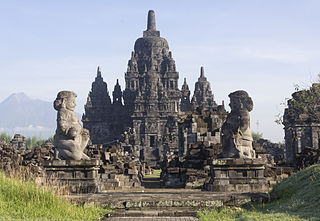
A Buddhist temple or Buddhist monastery is the place of worship for Buddhists, the followers of Buddhism. They include the structures called vihara, chaitya, stupa, wat and pagoda in different regions and languages. Temples in Buddhism represent the pure land or pure environment of a Buddha. Traditional Buddhist temples are designed to inspire inner and outer peace.

Javanese literature has a very large historical component. In all sorts of texts, such as laudatory poems, chronicles, and travelogues, writers have interpreted the how and why of certain circumstances.
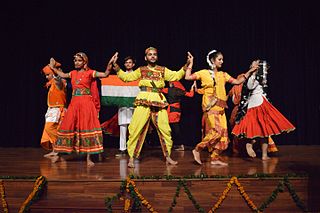
Unity in diversity is used as an expression of harmony and unity between dissimilar individuals or groups. It is a concept of "unity without uniformity and diversity without fragmentation" that shifts focus from unity based on a mere tolerance of physical, cultural, linguistic, social, religious, political, ideological and/or psychological differences towards a more complex unity based on an understanding that difference enriches human interactions. The idea and related phrase is very old and dates back to ancient times in both Western and Eastern Old World cultures. It has applications in many fields, including ecology, cosmology, philosophy, religion and politics.
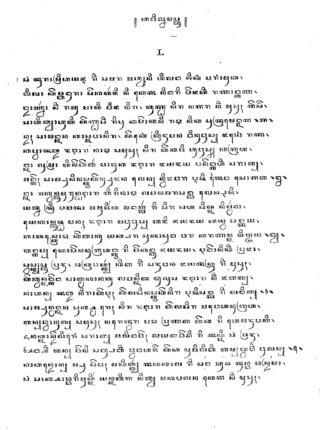
Kakawin Bhāratayuddha is an Old Javanese poetical rendering of some books (parva) of the Mahabharata by Mpu Sedah and his brother Mpu Panuluh in Indian meters. The commencement of this work was exactly 6 November 1157 by Sedah, and finished by Panuluh. The year of the composition is given in a chronogram sanga-kuda-śuddha-candramā which gives the year 1079 Saka. This is the equivalent of 1157 AD. Bhāratayuddha means "India's War" or "War of Bharat".

The national emblem of Indonesia is called Garuda Pancasila. The main part is the Garuda with a heraldic shield on its chest and a scroll gripped by its legs. The shield's five emblems represent Pancasila, the five principles of Indonesia's national ideology. The Garuda claws gripping a white ribbon scroll inscribed with the national motto Bhinneka Tunggal Ika written in black text, which can be loosely translated as "Unity in Diversity". Garuda Pancasila was designed by Sultan Hamid II from Pontianak, supervised by Sukarno, and was adopted as the national emblem on 11 February 1950.

Buddhism has a long history in Indonesia, and is one of the six recognized religions in Indonesia, along with Islam, Christianity, Hinduism and Confucianism. According to 2022 estimates roughly 0.7% of the total citizens of Indonesia were Buddhists, and numbered around 2 million. Most Buddhists are concentrated in Jakarta, Riau, Riau Islands, Bangka Belitung, North Sumatra, and West Kalimantan. These totals, however, are probably inflated, as practitioners of Taoism and Chinese folk religion, which are not considered official religions of Indonesia, likely declared themselves as Buddhists on the most recent census. Today, the majority of Buddhists in Indonesia are Chinese, however small communities of native Buddhists also exist.

Petrus Josephus Zoetmulder S.J. was a Dutch expert in the Old Javanese language. He came from Utrecht and was associated with the Society of Jesus by 1925. He worked at Leiden University in the 1930s. His first work appeared in 1930 and he continued to write into the 1990s. He lived in Yogyakarta and was interred in the Jesuit necropolis at Muntilan, Java.

The Nagarakretagama or Nagarakṛtāgama, also known as Desawarnana or Deśavarṇana, is an Old Javanese eulogy to Hayam Wuruk, a Javanese king of the Majapahit Empire. It was written on lontar as a kakawin by Mpu Prapanca in 1365. The Nagarakretagama contains detailed descriptions of the Majapahit Empire during its greatest extent. The poem affirms the importance of Hindu–Buddhism in the Majapahit empire by describing temples and palaces and several ceremonial observances.

Kakawin Hariwangsa is an Old Javanese poem in Indian metres which tells the story of Krishna, as an Avatar of Vishnu, when he wished to marry the Goddess Rukminī, from the land of Kundina, and daughter of Lord Bhishmaka. Rukmini is an avatar of the goddess Śrī.
Kakawin are long narrative poems composed in Old Javanese, also called "Kawi", written in verse form with rhythms and meters derived from Sanskrit literature. Poets used a formalized literary language, rather than the vernacular. Poets composed and performed the poems at the courts of central and east Java kings between the 9th and 16th centuries, and in Bali.

Javanese culture is the culture of the Javanese people. Javanese culture is centered in the provinces of Central Java, Yogyakarta and East Java in Indonesia. Due to various migrations, it can also be found in other parts of the world, such as Suriname, the broader Indonesian archipelago region, Cape Malay, Malaysia, Singapore, Netherlands and other countries. The migrants bring with them various aspects of Javanese cultures such as Gamelan music, traditional dances and art of Wayang kulit shadow play.

Kakawin Sutasoma is an Old Javanese poem in poetic meters. It is the source of the motto of Indonesia, Bhinneka Tunggal Ika, which is usually translated as Unity in Diversity, although it means '(Although) in pieces, yet One'. It is not without reason that the motto was taken from this kakawin as the kakawin teaches religious tolerance, specifically between the Hindu and Buddhist religions.

National symbols of Indonesia are symbols that represent Republic of Indonesia. It can represent Indonesia as a nation, Indonesian people, culture, arts, and its biodiversity. The official symbols of Indonesia are officially recognise symbols that represent Indonesia and enforced through Indonesian laws. These symbols of the state that represent Indonesian nationhood are Garuda Pancasila, Merah-Putih flag, Indonesia Raya national anthem, and Indonesian language.
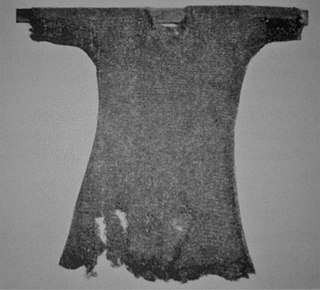
The Baju Rantai is a type of armor from Nusantara archipelago.

Indonesian nationalism is an ideology that arose during the Dutch colonial era in the Dutch East Indies which called for the colony's independence and unification as an independent and sovereign nation. This period of nationalist development under colonial rule is often called the Indonesian National Awakening. After Indonesia declared independence in 1945 and was recognized as independent of the Netherlands following the 1949 Indonesian National Revolution, Indonesian nationalism persisted as a set of ideologies supporting the continued independence and development of the newly formed country. Because of the multiethnic nature of Indonesia, Indonesian nationalism does not consist of advocacy for a single ethnic group, and at times has manifested as civic nationalism, religious nationalism, and left-wing nationalism. Some of those forms are exemplified in Indonesia's national motto Bhinneka Tunggal Ika which means "Unity in Diversity" in Old Javanese, in the country's foundational ideology of Pancasila, or in contemporary laws which guarantee ethnic and religious diversity.

Kawaca is a term for war attire mentioned in Old Javanese texts. Its name comes from the Sanskrit kawaca which means armor, cuirass, a type of chain mail, any kind of cover, corset, jacket.
Kakawin Arjunawijaya is an Old Javanese poem in poetic meters, written by Mpu Tantular between 1374 and 1379 CE.
